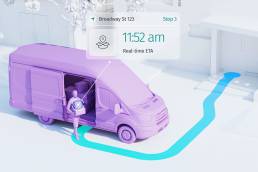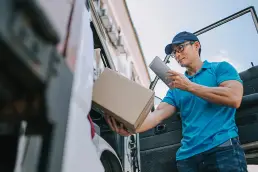The dramatic increase in home shopping caused by coronavirus (COVID-19) is not expected to slow down now customers are used to the ease of use, speed and convenience. Last mile logistics in particular continues to play a vital role in achieving this.
To deliver on time and at the lowest cost, logistic providers are continually looking at new technologies to optimize this last mile completely – in order to help the businesses they serve provide a seamless customer shipping experience.
Let’s take a closer look at the challenges impacting last mile logistics, last-mile delivery and the role that location technology plays.
Timely Delivery Affects The Purchasing Decision
The maximum differential value for all logistics service providers is the speed of delivery in the last mile. The companies they deliver on behalf of now find themselves in a market where customers often expect same or next day delivery. Reports show that consumers, especially millennials, are willing to pay a premium for same day delivery or even base their purchases on whether or not this is available.
Online retailers have to balance the cost of offering these services against the potential loss of business if they don’t. Making delivery more efficient, and therefore cheaper, is something many service providers are pursuing.
 Tackling Traffic Limitations
Tackling Traffic Limitations
However, many cities now have rules on the use of their roads. Some are even specifying when, how, and which vehicle types can use central routes. Although these efforts make sense – to reduce pollution, protect the environment, and make high density urban environments more pedestrian-friendly – they have a massive impact on the ability to make deliveries.
This is why many logistics and courier firms are using bicycles, scooters, and increasingly, electric vehicles to facilitate last mile logistics – for both consumers and business customers. And given how competitive the delivery space is anyway – particularly the great strides being made by major eCommerce brands, logistics firms are effectively under pressure to adapt or die.
How Location Data Can Help
As a result, understanding these rules and restrictions has become a key focus for the delivery industry. Location data and traffic data has a key role to play here – not just in navigating routes, but using real time location data; track each last-mile delivery automatically; ensuring customer-specified time slots can be met, and that city laws aren’t breached.
Also given the different modes of transport used, local data can help logistics firms optimise their time – showing them alternative routes, how long they’ll take, and which delivery method will be the most efficient compared to the rest thus positioning itself better in the market.
All things considered, planning routes and vehicle capacity is a core function of every delivery company. But as customers demand ever faster, more flexible delivery options, there’s an increased need for coordinating last mile logistics to get as granular a view as possible of all of the different factors that could potentially impede their efforts.
That’s why the last mile is so important, and why having solid insights can make all the difference.
Keen to discover how you can get more from location-based data? Talk to us today.



